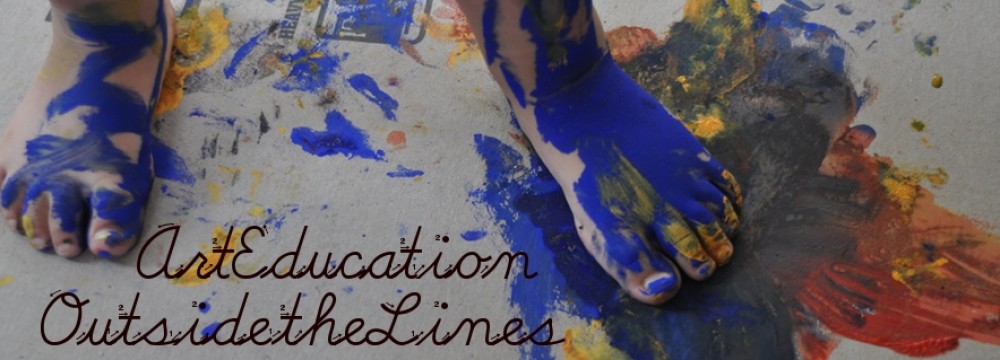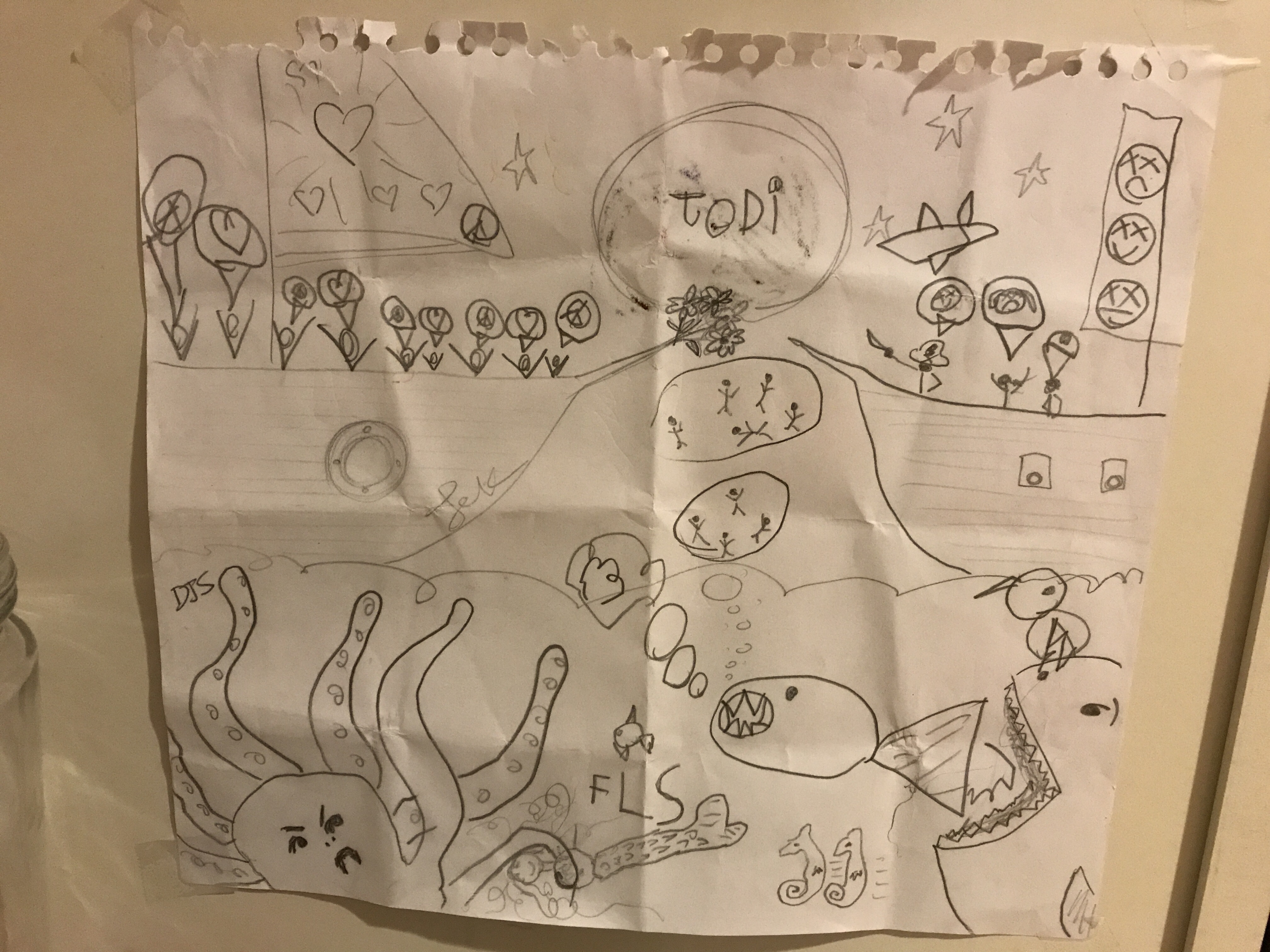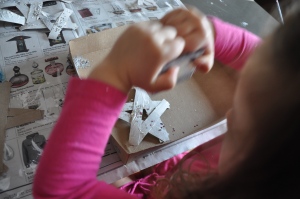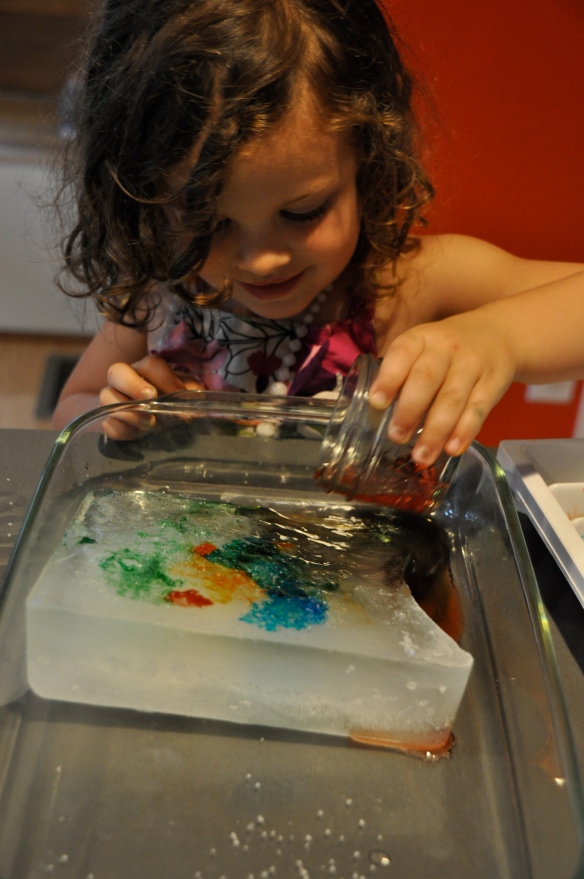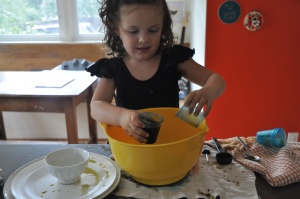This is my 8th year teaching for the University of Florida Online Master of Arts in Art Education program. Through the years, I have had the opportunity to work with art educators across the country doing amazing things. I showcased a few in this space with posts dedicated to their capstone projects (See “Time to Brag” and “Creamery Hill Racers,” for example). I intended to make that a regular column, but time got the better of me. Maybe this winter…
As any educator knows, one of the greatest gifts our students can give us is coming back with reports of how a course one taught, a reading one assigned, or a comment one made changed the way they think or behave. And so it was with great pleasure that I found this post on our program’s Facebook page one day this summer.

Another item on my perennial list of the “things I’ve wanted to do in this space” was to invite students and alumni to share their ideas and experiences. With that in mind I asked Natalie to write something about Tinkergarten. According to their website, “Tinkergarten provides high-quality early childhood learning in the healthiest classroom of all—the outdoors. Families connect with trained leaders in their local community for play-based kids classes that help develop core life skills, all while having fun!” The following are Natalie’s thoughts on the program, drawing on her knowledge and experience as an art educator.
“Natural Education” by Natalie Davis
Sydney darted across the park with her backpack yelling “Miss Betsy! Miss Betsy!” She was so excited to show her teacher her red galoshes. It was mud day and my three-year-old little girl was extremely excited to get dirty and start her play-based outdoor classroom, Tinkergarten.

What is Tinkergarten?
It is not your typical classroom. In fact, it is the complete opposite of a brick and mortar school. There are no walls and there are no desks. Children are not required to walk in single file lines. Use of digital technology is prohibited. Rather, a Tinkergarten class takes place in a park or other green space in the local community. The concept is simple: playing in nature and learning go hand-in-hand. Sticks become drawing tools, mud becomes paint and flowers become collage items. The outdoor play-based activities are not only fun but also cognitively stimulating because they encourage children to explore. The learning environment is as authentic as the surroundings.
Why Tinkergarten?
As an art educator and mamma, I was drawn to Tinkergarten’s philosophy of play-based learning. I welcomed the opportunity for Sydney to learn through innovative approaches to curriculum I was familiar with from art education like Waldorf, Reggio Emilia, Forest Kindergarten, and Montessori (Tinkergarten, 2017). Like Dewey (1925), Froebel (1887), Lowenfeld (1949) I know it’s important for young children to be in and explore the natural world, and use their biological desire of playing to inspire and enrich their thinking. As an art educator, I followed this philosophy in my own teaching career and witnessed success first hand. I wanted that kind of learning for my daughter.
How does play turn into learning?
The word play sometimes can be misconstrued as useless recreation. This is definitely not the case during a Tinkergarten class. The class has a trained facilitator referred to as the Leader. The leader sets up playful invitations and activities designed to enable the children to take an active role in learning. The children’s natural curiosity guides the learning experience. I strongly agree that these types of activities are “the best way to help nurture kids’ development and ready them for academic success later in life” (Tinkergarten, 2017, para 4).
The Leader’s role is not to ensure completion of the activity as might be assumed. Instead they are there to help guide children into deeper understanding by capitalizing on situations that excite interest in each individual child. They use these opportunities for educational enrichment.
For example, my daughter came across a worm and a bug while digging in the mud. Her discovery led to conversation. The leader prompted my daughter and the class to talk about the worm and bug. They discussed their purpose, textures, and colors. Digging in the mud was turned into making a “worm hotel habitat” out of a mason jar. In another area of the park, a child found a rock while digging in the mud. The little boy held up the rock and announced his discovery to the class. As more children gathered around to see his treasure, he dropped the rock into a large bucket of water. The Leader seized the opportunity for enrichment and suggested to the group to make a special “soup”. The Leader’s suggestion led to an outpouring of imaginative responses from the children. They began discussing the “special soup ingredients” and ran off helping one another to gather them. They collected foliage, rocks, and flowers to name a few. In this moment, the children were working on social skills, motor skills, collaboration, creativity, and problem solving.

Final Thoughts
A few years ago, in a course in graduate school, I read an article that intrigued me on the subject of technology in the classroom. The article described a trend among Silicon Valley CEO’s who enroll their own children in nature-inspired Waldorf Schools (Richtel, 2011). I was fascinated to learn that technology leaders saw value in using nature and limiting technology in their children’s education. I added it to the list of reasons I might pursue such experiences for my daughter.
References
Tinkergarten, 2017, Retrieved from https://www.tinkergarten.com/leaders/betsy.modrzejewski
Dewey, J. (1925). Experience and Nature. Chicago & London: Open Court.
Froebel, F. (1887). The Education of Man. (Translated by Hailmann, W.N.) New York, London, D. Appleton Century.
Lowenfeld, V., & Brittain, W. L. (1970). Creative and mental growth (5th ed.). [New York]: Macmillan.
Richtel, M. (2011, Oct. 22). A Silicon Valley School That Doesn’t Compute. [Essay on New York Times]. Retrieved from http://www.nytimes.com/2011/10/23/technology/at-waldorf-school-in-silicon-valley-technology-can-wait.html


